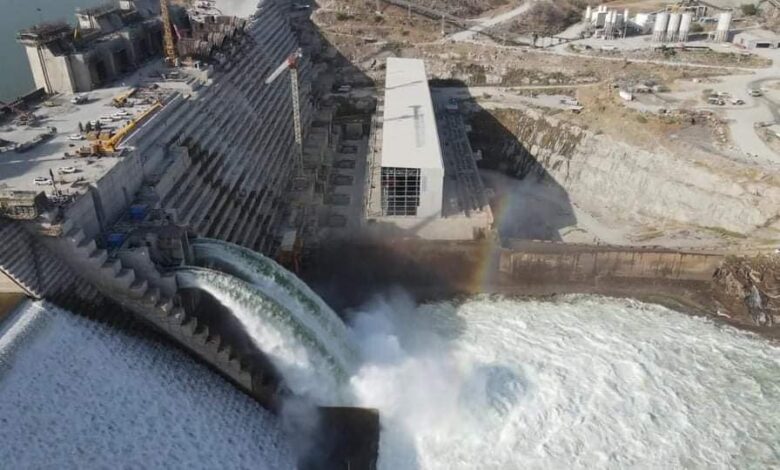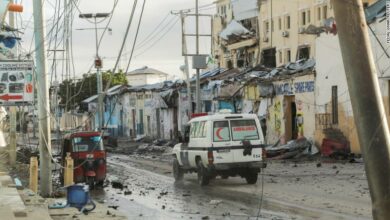
A Professor of Geology and Water Resources at the Cairo University Abbas Sharaky responded on Wednesday to photos published on a twitter account claiming that Ethiopia has operated more turbines in the Grand Ethiopian Renaissance Dam (GERD).
The Egyptian and Ethiopian local News account on twitter has posted on Sunday two photos for a development in Gerd.
In the post it said that “this is due to the water pump from the #10 turbine that has been working and producing electricity since yesterday (Saturday).”
Read Satellite Pic#Ethiopia Renaissance dam
On the left( Today’s pic) notice the increase of the blue space inside the red circle (in front of the middle lane).
This is due to the water pump from the #10 turbine that has been working and producing electricity since yesterday. pic.twitter.com/kD68nc4Fbj
— Egyptian and Ethiopian local News (@RenaissanceDam) February 13, 2022
Sharaky explained in a Facebook post that the pictures published on twitter were “enlarged and pixilated images of one part of the lake of GERD.”
He pointed out that “the tweet is comparing two photos on February 11 and the other on February 13, although there is no filming on February 11, and the photo is for February 8,” explaining: “Is it conceivable that the operation takes place without a celebration?”
He noted that the situation is currently, “there is no operation (for turbines ) until today, and if that happens, it will show it in the pictures and I will announce it upon its arrival.
At the first or second filling, or when any change occurs in the dam’s body. The operation will bring Egypt all the water of the second filling, despite that we reject it because it is a unilateral decision, and the operation is very limited in generating electricity.”
Negotiations over the GERD have officially stopped since April 2021, after Egypt, Sudan and Ethiopia failed to reach an understanding before the start of the second filling of the dam, which Ethiopia implemented in July.
Cairo and Khartoum reject Ethiopia’s insistence on filling the dam before reaching a binding agreement on filling and operation.
Egypt, which relies considerably on freshwater from the Nile, has voiced fears that the GERD would negatively impact the country’s water supply.
Egypt has also insisted that measures be put into place to protect downstream countries in case of drought during the dam’s filling process.
Egypt and Sudan say they want a legally binding agreement, while Ethiopia says any pact should be advisory.
Egypt and Sudan consider the dam a threat to their vital water supplies, while Ethiopia considers it essential for development and doubling its electricity production.
The downstream nations fear possible blows to water facilities, agricultural land, and overall availability of Nile water.
Negotiations over the dam between Egypt, Ethiopia, and Sudan have stalled for years, with the three parties ultimately failing to reach any concrete agreement.
The disputed dam is the largest hydroelectric project in Africa, with a cost of more than four billion dollars. The construction of the dam began in 2011.
It is considered to be one of Egypt’s most serious water issues.



